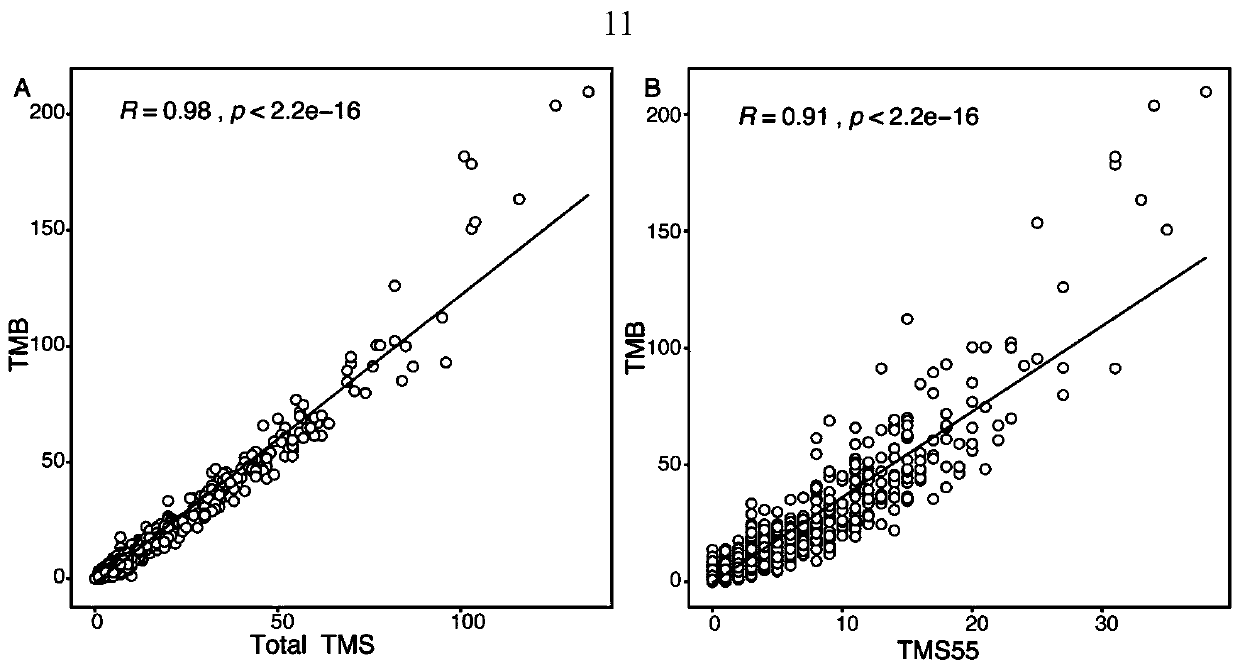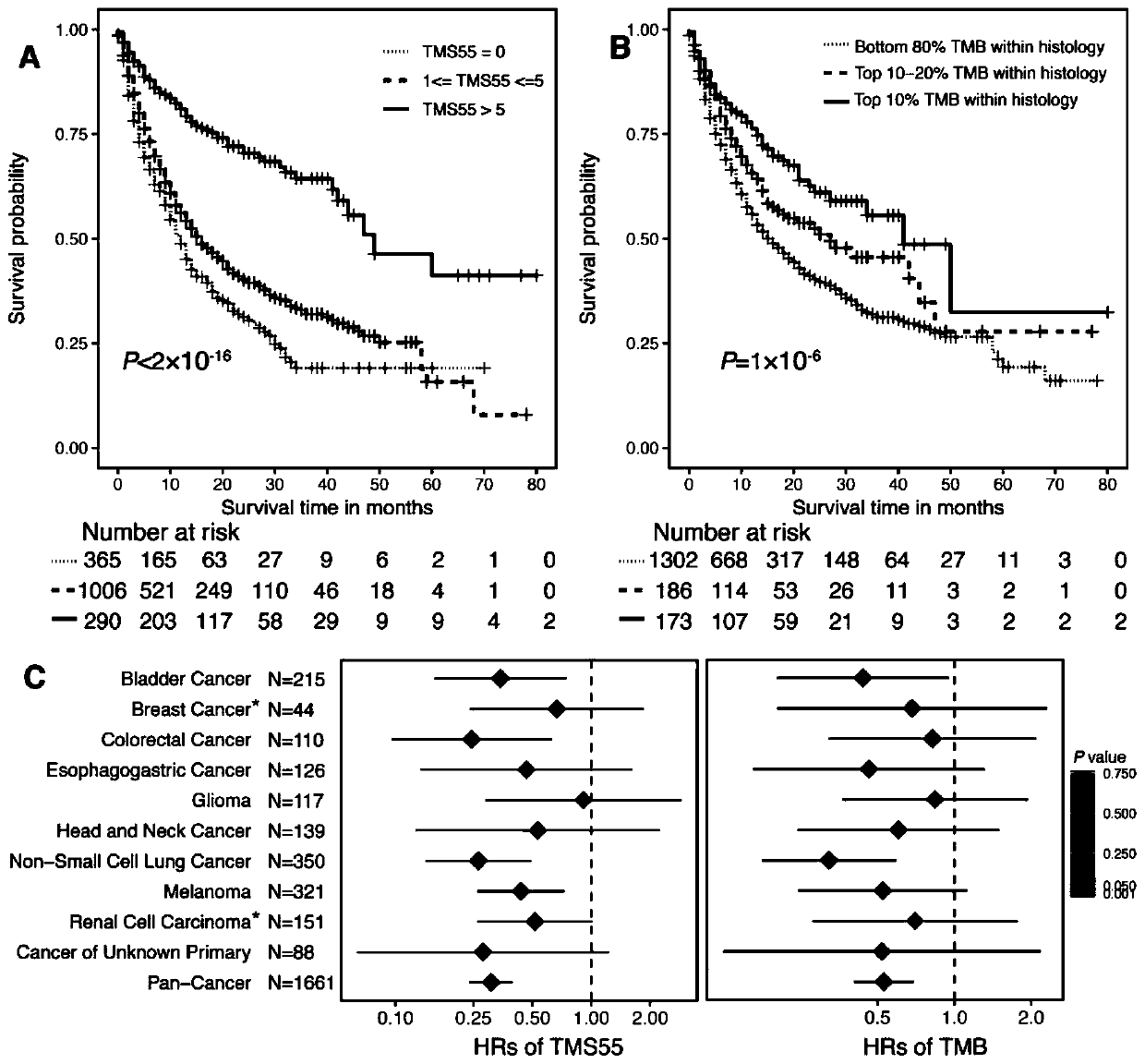Gene combination and application thereof in preparation of reagent for predicting prognosis of patient treated by immune checkpoint inhibitor
A gene combination and gene technology, applied in the field of biomedicine, can solve the problems of differences in TMB, difficult to achieve, affecting the accuracy of TMB, etc., and achieve the effect of high efficiency, easy clinical promotion, and economic burden reduction.
- Summary
- Abstract
- Description
- Claims
- Application Information
AI Technical Summary
Problems solved by technology
Method used
Image
Examples
Embodiment 1
[0031] [Example 1] TMS55 analysis of targeted gene sequencing data of 1661 patients receiving immune check inhibitors
[0032]Reference 4 discloses targeted gene sequencing data of 1661 tumor samples from patients receiving immunocheck inhibitor therapy, and the sequenced gene combination is MSK-IMPACT. Tumor samples from 1,661 patients included 215 cases of bladder cancer, 44 cases of breast cancer, 110 cases of colorectal cancer, 126 cases of esophageal and gastric cancer, 117 cases of glioma, 139 cases of head and neck cancer, 350 cases of non-small cell lung cancer, and 321 cases of melanoma , 151 cases of kidney cancer and 88 cases of tumors with unknown primary sites. Each sample received targeted sequencing of no less than 300 gene combinations. The data disclosed in reference 4 provides the necessary survival data and TMB data. In the prognostic analysis, the cutoff value of TMB level is divided according to the percentage in each tumor type (top10%, top10-20% and bot...
Embodiment 2
[0040] [Example 2] Comparison of the results of TMS55 and TMB for 1661 patients receiving immune check inhibitors
[0041] The present invention calculates the TMS and TMB of 1661 patients receiving immune check inhibitors by using the targeted gene sequencing data of tumor samples of patients receiving immune check inhibitor treatment disclosed in reference 4, and the results show that TMS has a significant correlation with TMB ( figure 1 ). Total TMS including all sequenced genes had a very high correlation with TMB (R=0.98, P-16 , figure 1 A). In the identification of positive and negative mutation genes, the present invention identifies 55 positive mutation genes, and calculates TMS55, that is, the number of non-synonymous mutation genes among the 55 genes. Therefore, the minimum value of TMS55 is 0, the maximum value is 55, and it is an integer. Its TMS55 also had a high correlation with TMB (R=0.91, P-16 , figure 1 B). These results showed that although TMS55 elimin...
PUM
 Login to View More
Login to View More Abstract
Description
Claims
Application Information
 Login to View More
Login to View More - R&D
- Intellectual Property
- Life Sciences
- Materials
- Tech Scout
- Unparalleled Data Quality
- Higher Quality Content
- 60% Fewer Hallucinations
Browse by: Latest US Patents, China's latest patents, Technical Efficacy Thesaurus, Application Domain, Technology Topic, Popular Technical Reports.
© 2025 PatSnap. All rights reserved.Legal|Privacy policy|Modern Slavery Act Transparency Statement|Sitemap|About US| Contact US: help@patsnap.com


